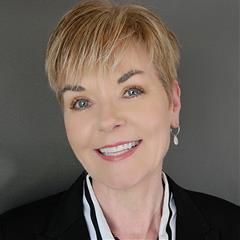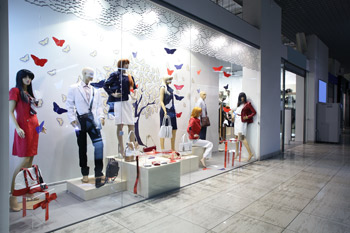 Last month's SPIRE event saw a lineup of expert speakers on pertinent topics for CEOs and executive leaders in retail, point-of-purchase, OEM, transit, outdoor and similar graphic solutions. Among those speakers was Carol Spieckerman, president, Spieckerman Retail — a recognized retail expert, public speaker, and media contributor on global retail trends. In her presentation, “Bricks Have New Tricks! The Future of Brick and Mortar Retail,” she, discussed the reinvention of retail that has been accelerated by the pandemic. She also shared what this means for print service providers (PSPs) who can take advantage of the pent-up demand that’s going to hit brick and mortar. Here are some of her key takeaways.
Last month's SPIRE event saw a lineup of expert speakers on pertinent topics for CEOs and executive leaders in retail, point-of-purchase, OEM, transit, outdoor and similar graphic solutions. Among those speakers was Carol Spieckerman, president, Spieckerman Retail — a recognized retail expert, public speaker, and media contributor on global retail trends. In her presentation, “Bricks Have New Tricks! The Future of Brick and Mortar Retail,” she, discussed the reinvention of retail that has been accelerated by the pandemic. She also shared what this means for print service providers (PSPs) who can take advantage of the pent-up demand that’s going to hit brick and mortar. Here are some of her key takeaways.Retailers no longer just sell stuff.
As Spieckerman noted, retailers are now platforms that tie together solutions, products, services, new formats, mobile, data, content, and much more. And with retailers now more open to the idea of working with partners, this idea of platform thinking extends to PSPs. “Your goal is no longer just to sell stuff to retailers; your real opportunities open up when you start positioning your platform to theirs,” she said. “Get out of that old mindset of just talking about what you do and how you do it … and start to put ‘why’ at the top of the hierarchy.”
 It’s all about diversification, acceleration, and captivation.
It’s all about diversification, acceleration, and captivation.
From their categories to business models and formats, retailers are diversifying rather than opting to open more stores. They’re accelerating in terms of speeding up their talent acquisition, innovation, and decision-making. And they not only want to engage customers, but they want to captivate them and keep them “playing” on their platforms.
Build platform-based influence networks.
Gone is the cookie-cutter organizational structure, and as retailers integrate offline and online business into one total customer experience, roles will shift and new faces and positions (e.g., the customer experience director) will enter the mix. While building networks instead of going after special contacts can help PSPs not get lost in transition, PSPs must also “embrace the aliens” (i.e. the new faces and their perspectives), and have a marketing message that’s going to resonate with them. “You have an opportunity to position your entire platform, your creative resources, your manufacturing capabilities, your data, your content to their platforms,” added Spieckerman.
Whether they’re acquiring another business or talent, diversifying into new categories, investing in their brand experience (captivating customers with features from interactive displays to wine bars), or retrofitting their stores to sustainability — or all of the above — keep track of what’s happening in the market and retailers’ goals. “Think about how these brands can tap into your expertise, how they can use your smarts to get this brick-and-mortar thing right, right from the start, and how they can accelerate innovation, using your solutions,” said Spieckerman.
These are just a few of the tips Spieckerman shared. To learn more about Spieckerman and her company, visit spieckermanretail.com.

Lauren Searson has been the Managing Editor for the PRINTING United Journal since November 2017 and has worked in publications for 13 years.